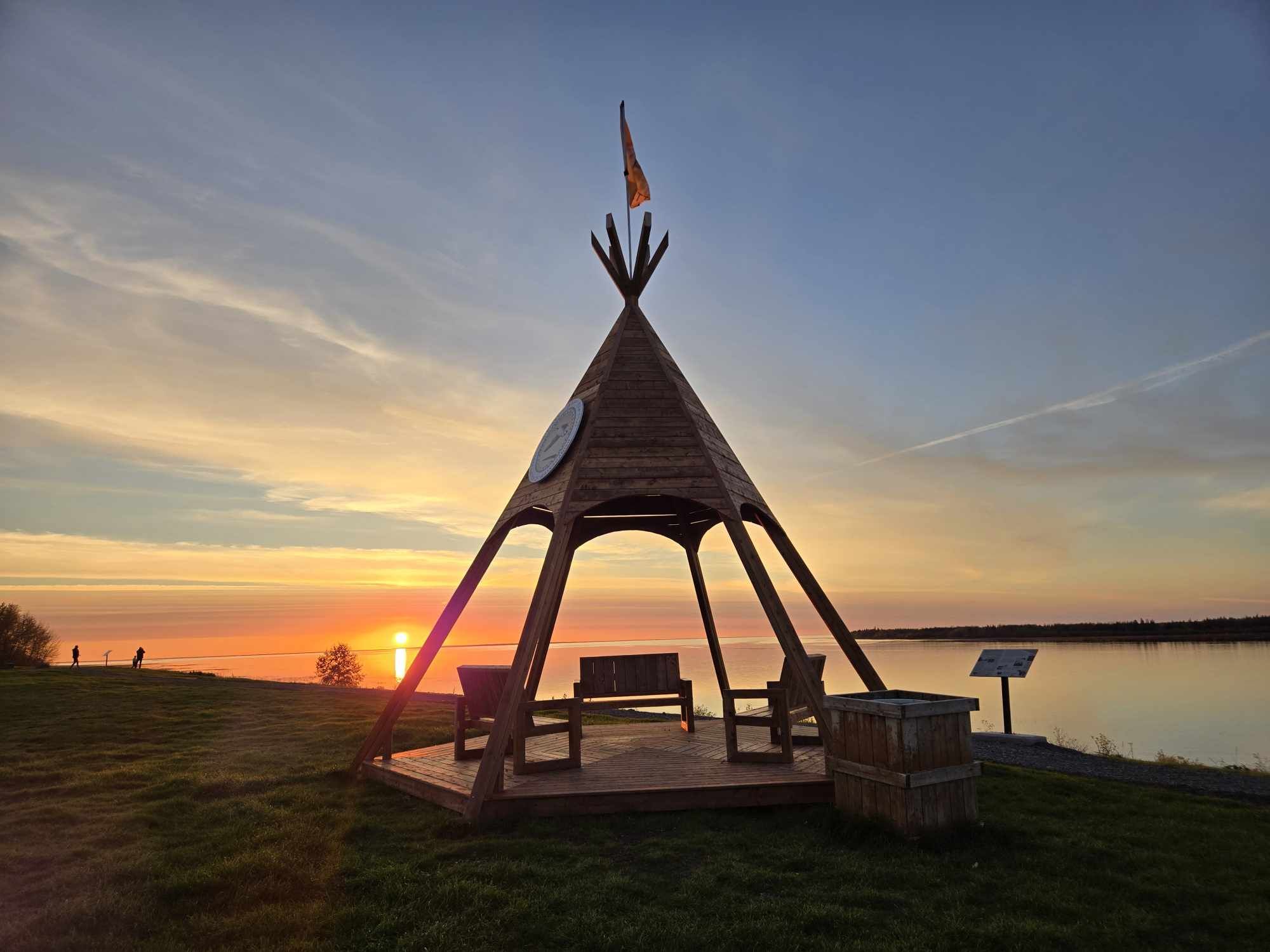
Building Connections Through Languages and Cultures: An Educator’s Journey to Waskaganish, Eeyoo Itschee (James Bay)
Join us on a journey of connection, culture, and education as Dr. Heather Phipps shares her experience teaching Language Arts in the Cree Nation of Waskaganish, Eeyoo Itschee (James Bay), Québec. Discover how storytelling and place-based learning enriched her teaching practice and fostered meaningful bonds with her students. From riverside lessons to heartfelt exchanges about identity and tradition, this inspiring account challenges conventional classroom boundaries and highlights the enduring power of cultural learning.
A Passion for Languages, Stories, and Cultures Kindled at an Early Age
Born to parents from diverse backgrounds - her mother from Manchester, England, and her father from Montreal - Heather's early years in northern British Columbia were a unique blend of quiet rural life and a deep, familial love for language and culture.
“We were a book-loving family. Instead of furnishing our home with a television, my parents furnished it with literature, music, and art. We were encouraged to spend time playing outdoors throughout the seasons,” recalls Heather.
Regular visits to the nearby local libraries and theatres, as well as fine arts programmes and extra-curricular arts-based activities, gave Heather opportunities to explore new worlds through literature, film, music, and drama, and to develop a love of storytelling.
Her passion for learning a second language began when she took French classes in elementary school. A memorable experience during a Christmas concert in Grade Four - where she and her classmates performed a French song for their families - marked the beginning of her love for learning language through the arts. This early foundation in languages, along with her family’s encouragement, prepared Heather for future academic and professional pursuits in education, literacy, and social justice.
Immersion in French Language and Cultures
When she had the opportunity to travel to Québec for a summer language programme, Heather was motivated by the idea of being a French teacher, seeing it as a way to help others explore new perspectives through language and culture.
“I spent my first year at Grande Prairie College in Northern Alberta, where I had one of the most inspiring French professors. He encouraged me to go to Quebec that summer in the OLBP, and it was through his support that I realized becoming truly bilingual was within reach,” recalls Heather. “I had already enrolled in the B.A./B.Ed. programme in Humanities/Modern Languages Education at the University of Lethbridge, and so spending five weeks of the summer immersed in the francophone milieu of Jonquière, Québec was an incredible experience that deepened my love of language and culture. This was my first trip alone to Québec, meeting with students from across Canada, and it was transformative.”
As Heather continued her studies at the University of Lethbridge, the French Education program had a requirement that she go to a French-speaking university for at least one semester on exchange. Heather spent a semester at Université du Québec à Chicoutimi, located in the Saguenay region, where she was deeply immersed in French language and culture and made connections with local and international students through university activities, such as French cinema nights.
Since then, Heather has travelled extensively between Québec and Western Canada, as well as internationally. She spent several years living, teaching, and studying in Québec and also spent a sabbatical year living in France as a Visiting Professor. She has visited various countries within North and South America, Europe, Australasia and West Asia. She’s enrolled in various language classes including German, Italian, Spanish, Gaelic, and Cree.
She encourages her students in French Education to explore and live the French language through community-based, cultural and immersive experiences in diverse francophone communities, believing that such opportunities are truly life-changing.
"Here in our Baccalauréat en education française (Le Bac) program, students go together to Québec City to study at Université Laval in the second year. This experience is transformational," Heather says. "Students reflect on their identities with new outlooks and motivation."
Check out the Baccalauréat en education française (Le Bac) program, offered by the Faculty of Education, University of Regina.
Taking on an Opportunity Like No Other: Teaching at the University of Regina
After six years of teaching in both elementary and high school in Québec and Alberta, Heather embarked on a solo cross-country trip in 2008. Driving from Lethbridge, Alberta, to Montreal, she made the journey to attend graduate school at McGill University. Over seven days, she travelled across Canada, appreciating its vast landscapes and diverse cultures - a journey that marked the beginning of a new chapter in her life.
Heather joined the University of Regina in 2016 as she was nearing the completion of her PhD dissertation at McGill.
“I heard good things about Saskatchewan education from my professors at McGill. As I was finishing my thesis, I saw the job posting in my email and I read it immediately. The combination of French language and social justice, along with the proximity to First Nations University, was very appealing to me,” says Heather.
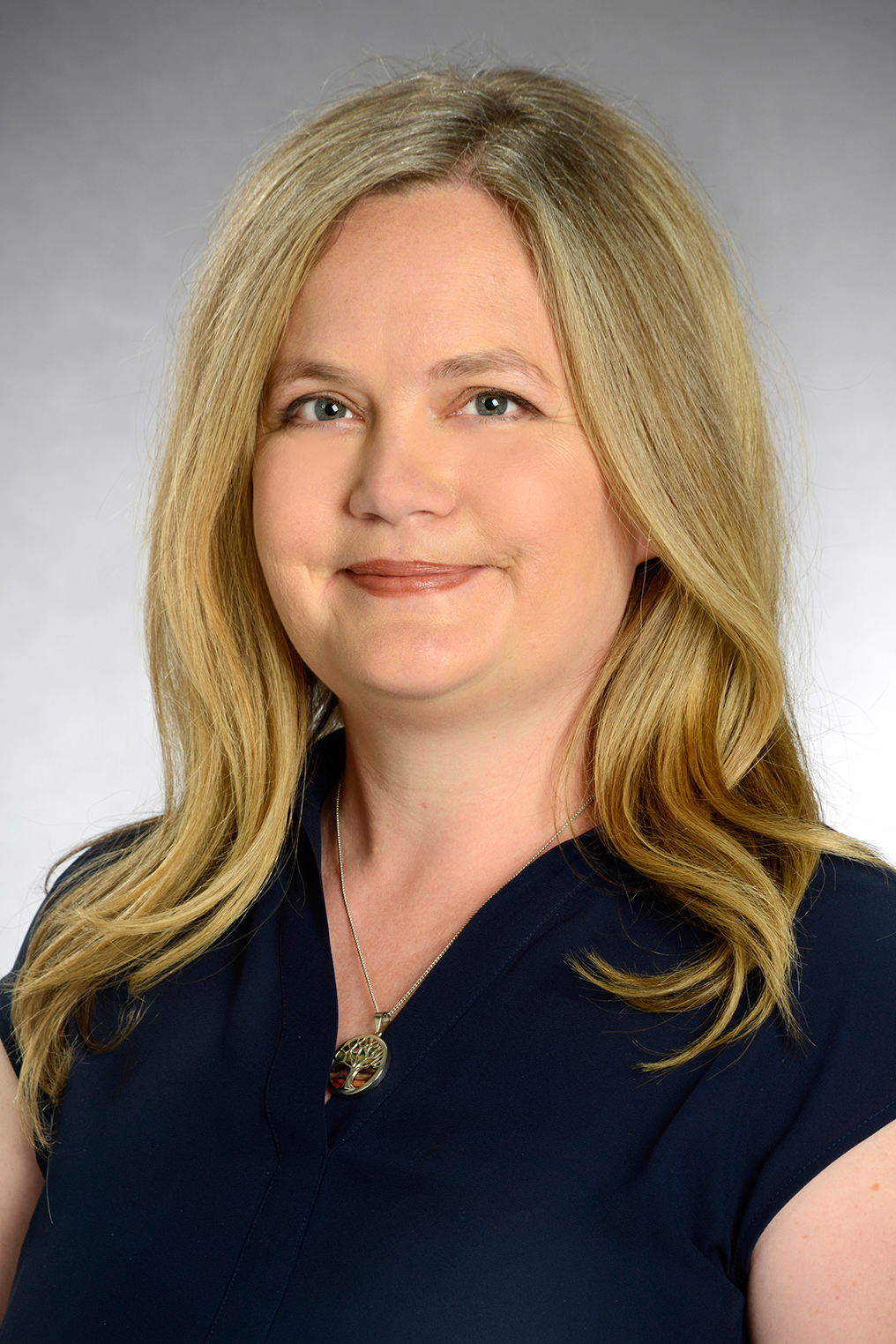
Caption: Dr. Heather Phipps, Associate Professor - Minority Language Education
Photo credit: Dr. Heather Phipps
Teaching Language Arts in Eeyou Istchee: Connecting Through Language, Land, and Story
This autumn, Heather travelled to the Cree Nation of Waskaganish, James Bay to teach a Language Arts course for elementary teachers, in collaboration with McGill University’s Office of First Nations and Inuit Education and the Cree School Board. The course was part of the community-based Bachelor of Education program, allowing students to complete their degrees within their own community in Eeyou Istchee.
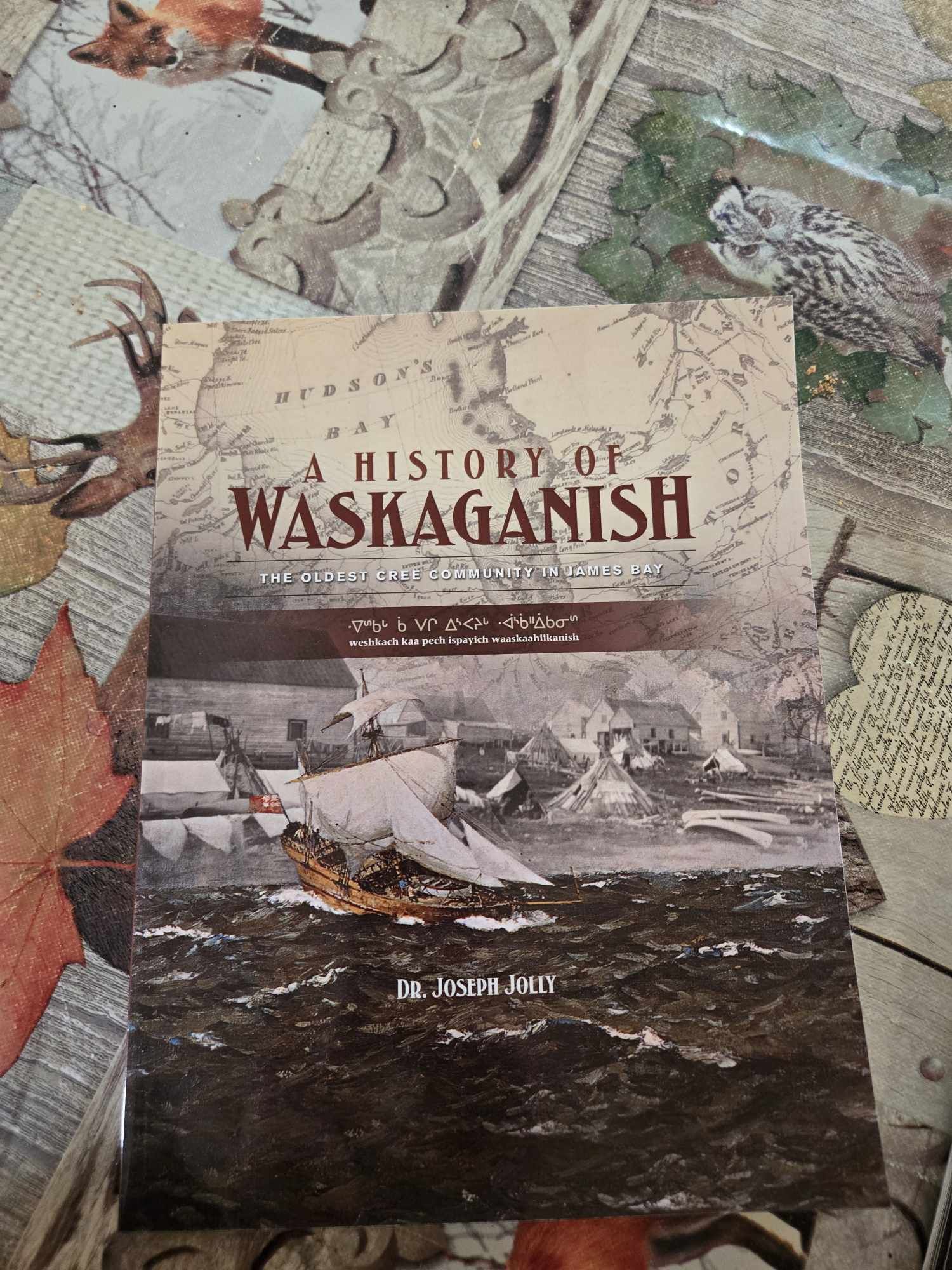
Caption: A History of Waskaganish: The Oldest Cree Community in James Bay - available at the Waskaganish Cultural Centre
Photo credit: Dr. Heather Phipps
“Late September and early October was an incredibly beautiful time to visit. I took the small plane from Montreal on Air Creebec, via Val d’or, and was the only person to get off the plane in Waskaganish that day. The rest of the passengers were going further to northern communities,” recalls Heather.

Caption: The Air Creebec plane Phipps took from Montreal to Waskaganish
Photo credit: Dr. Heather Phipps
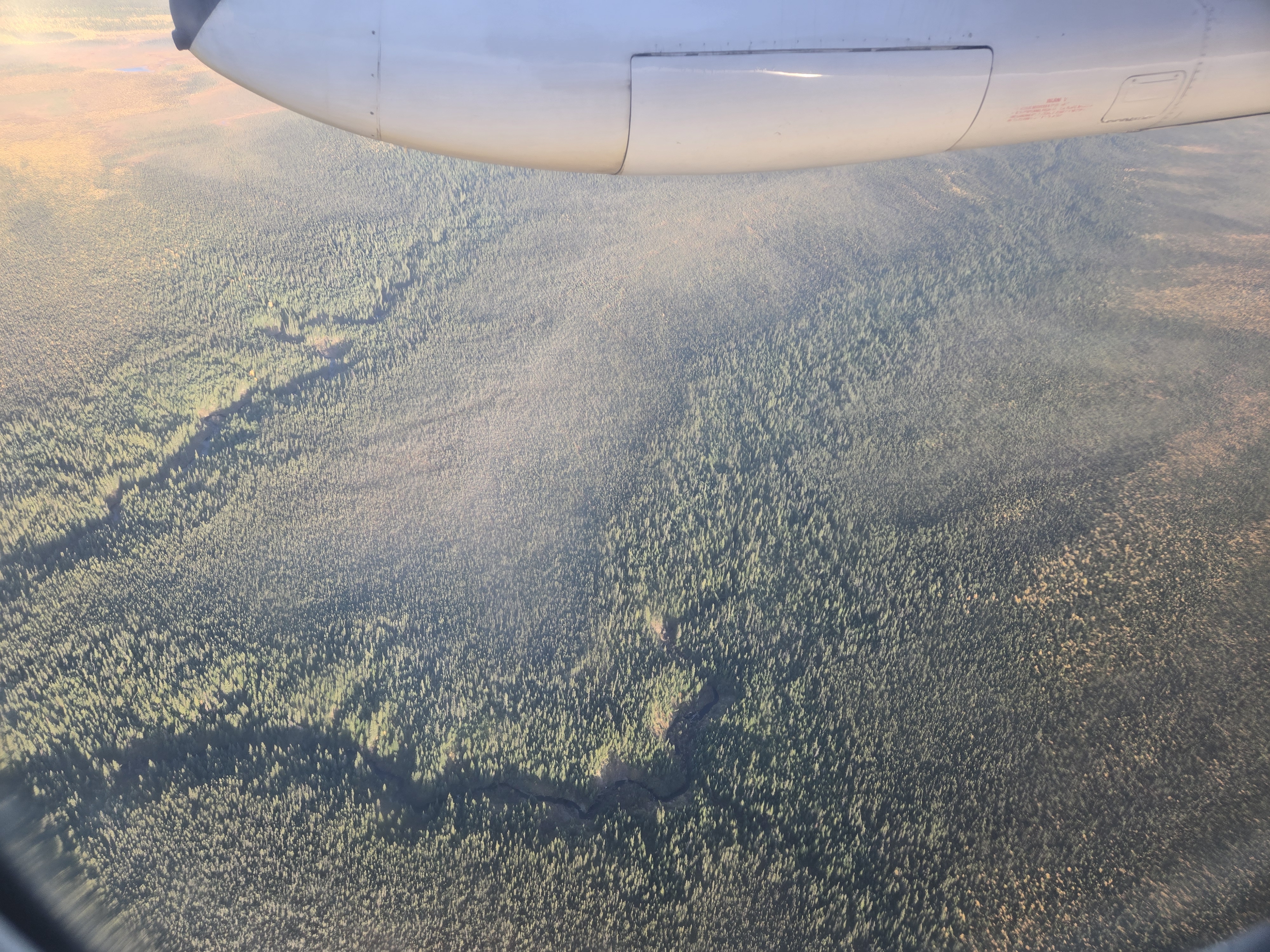
Caption: View from the plane
Photo credit: Dr. Heather Phipps
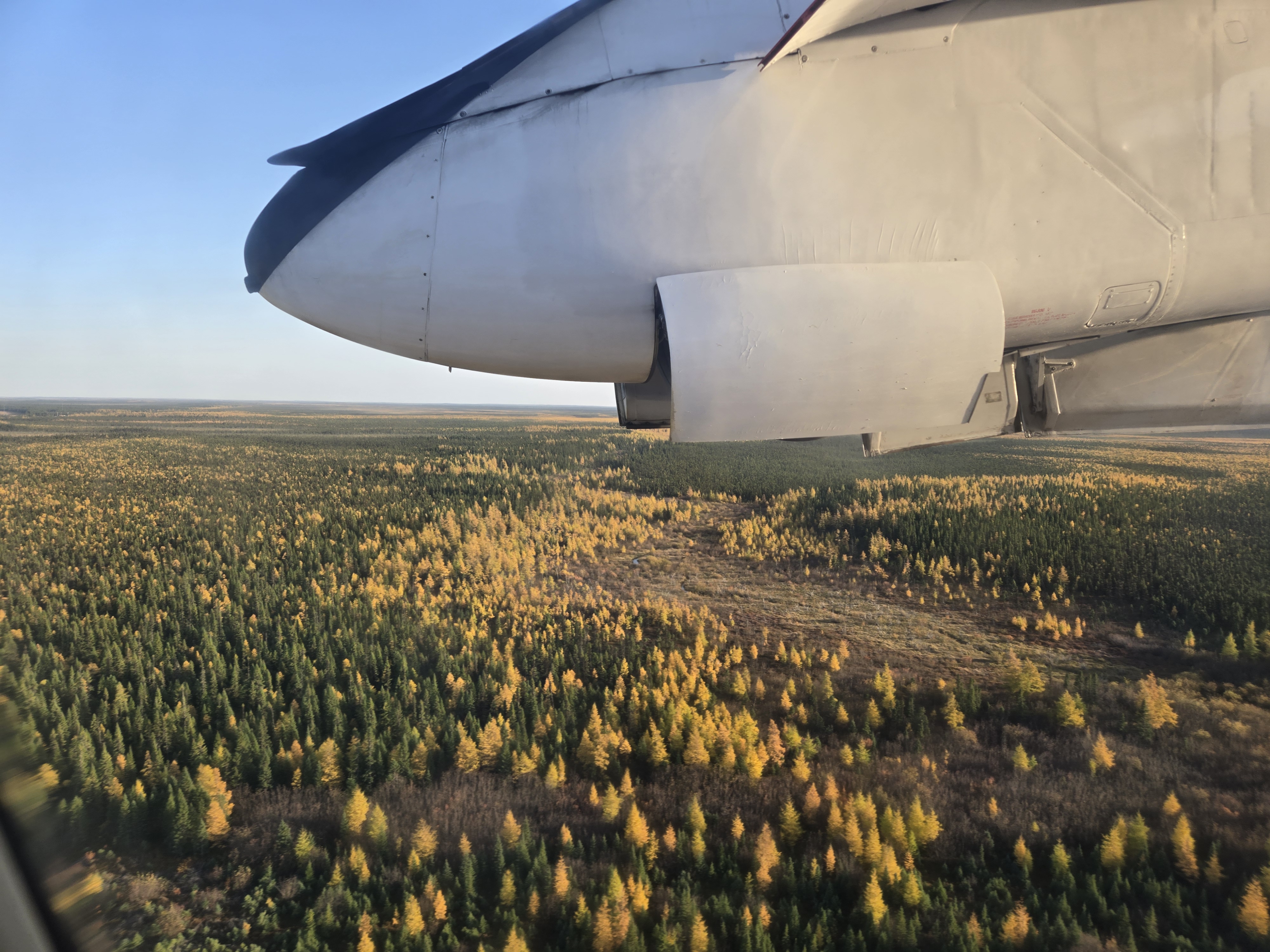
Caption: View from the plane
Photo credit: Dr. Heather Phipps
The Cree Nation of Waskaganish is one of the oldest communities in North America and was originally a trading post, which is where the name “Waskaganish” comes from. In Cree, Waskaganish means “little house,” and Heather learned from her students that this place was historically significant for trade among Indigenous peoples before the arrival of Europeans.
“The trip was particularly special for me, as I have been learning Cree syllabics, which are taught in the schools of Waskaganish. I’ve always been interested in learning more about the local history, as well as the language education (including syllabics) in various contexts, and how the teachers are integrating it into their curriculum in multilingual settings,” says Heather.
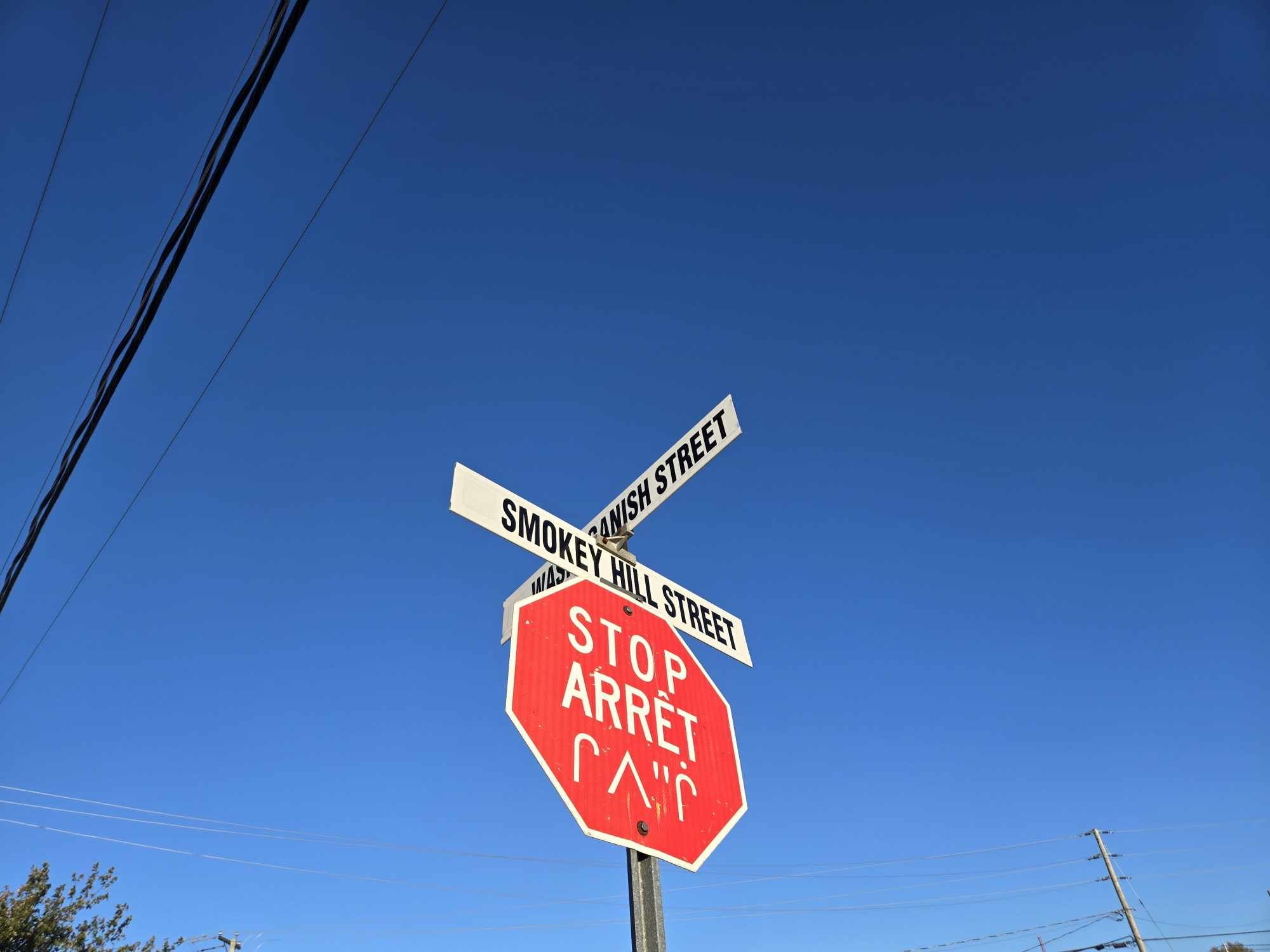
Caption: Multilingual stop sign in Cree syllabics, French and English
Photo credit: Dr. Heather Phipps
Upon arriving in Waskaganish, Heather learned that for the first week, her classroom would be in a community hall by the Rupert River, instead of in the school.
“It is important to learn to adapt and be flexible, as unpredictable things often happen all the time in teaching, especially in the north. I woke up early and brought a few children's books with me and was excited to meet the class. On the way to the community hall, Lorraine Diamond, the Education Consultant for the Cree School Board, kindly picked me up in her truck and drove me there. I remember she rolled down the window as some students were arriving. She said, ‘I have your teacher with me,’ I felt warmly welcomed,” recalls Heather.
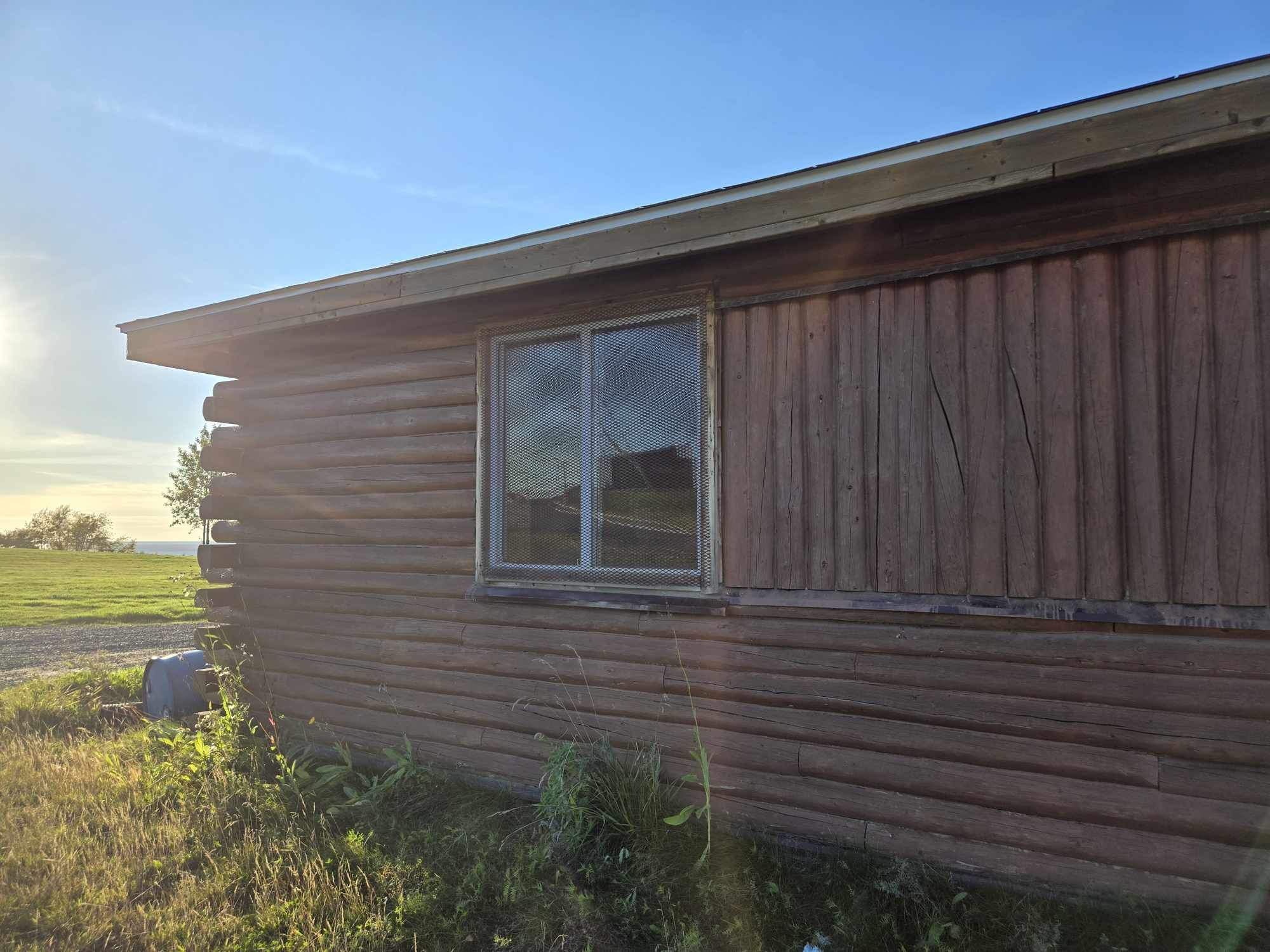
Caption: The Rupert River Community Centre in Waskaganish
Photo credit: Dr. Heather Phipps
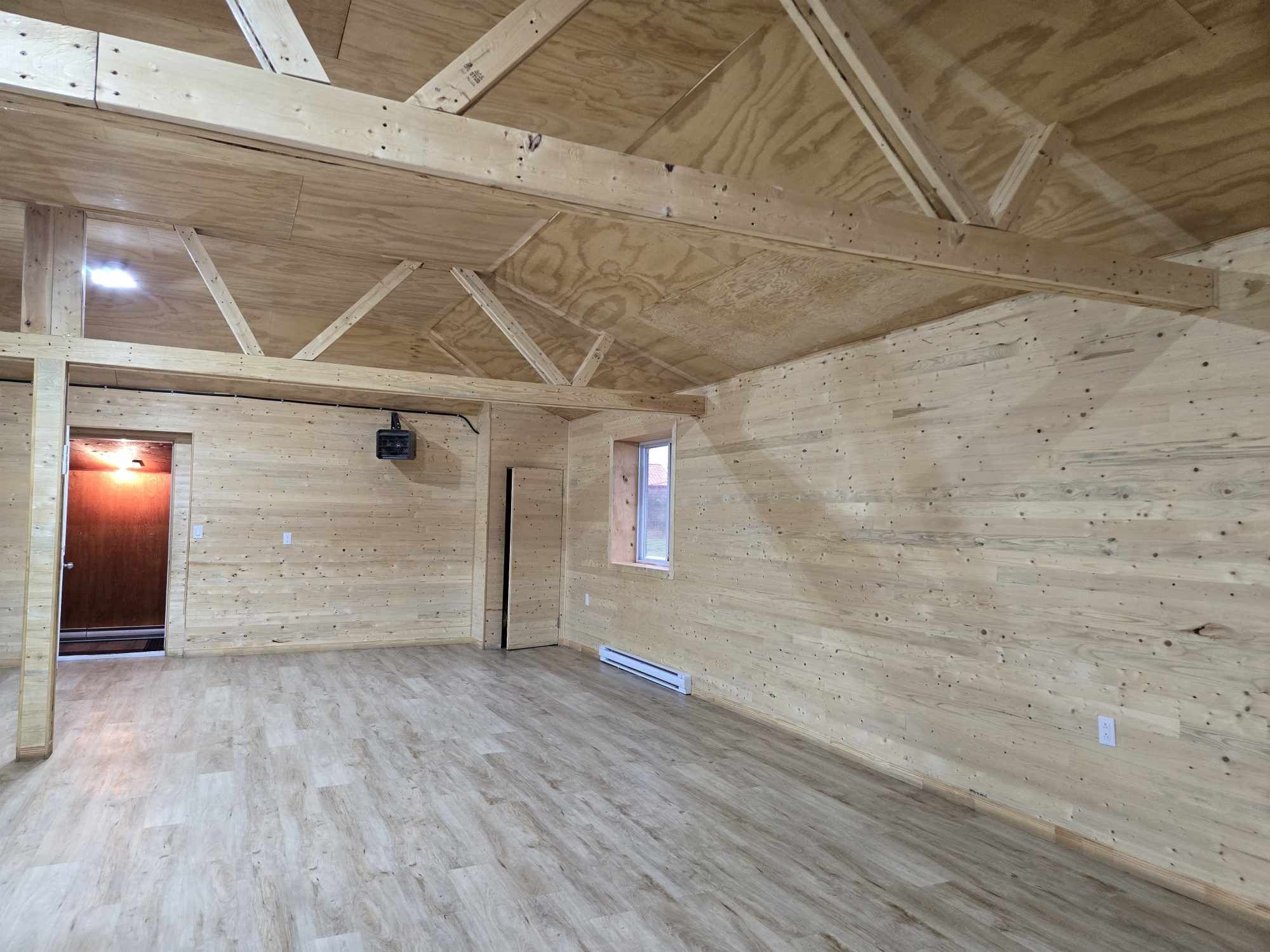
Caption: Photos from inside the community centre that was our classroom for the first week
Photo credit: Dr. Heather Phipps
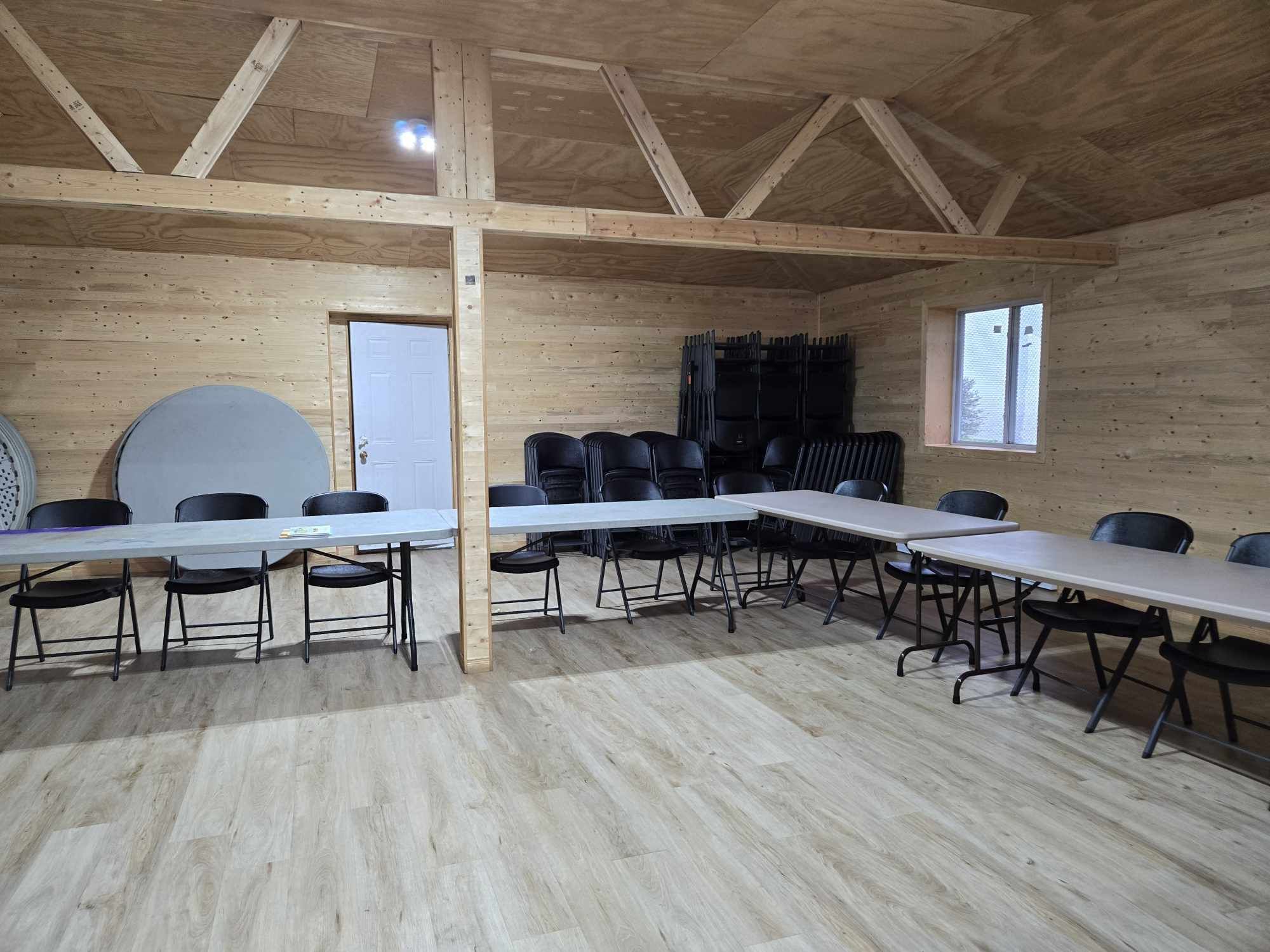
Caption: Photos from inside the community centre that was our classroom for the first week
Photo credit: Dr. Heather Phipps
“The warm welcome from my students immediately made me feel comfortable. We began by setting up the tables and chairs in our class together, and laughter filled the room. Then we started with some stories and discussion. One of the first stories we read aloud and discussed together was You Hold Me Up by Monique Gray-Smith, which sparked a conversation about kindness. I remember a student saying after that discussion, ‘Now I can see there's so much you can do with one book, with one story,’” says Heather.
Later that day, Heather wrote a message to her colleagues here in Regina: “Although we don’t have in the building, we have used our creativity to explore language and story, and so I think we but we have made a better connection.”
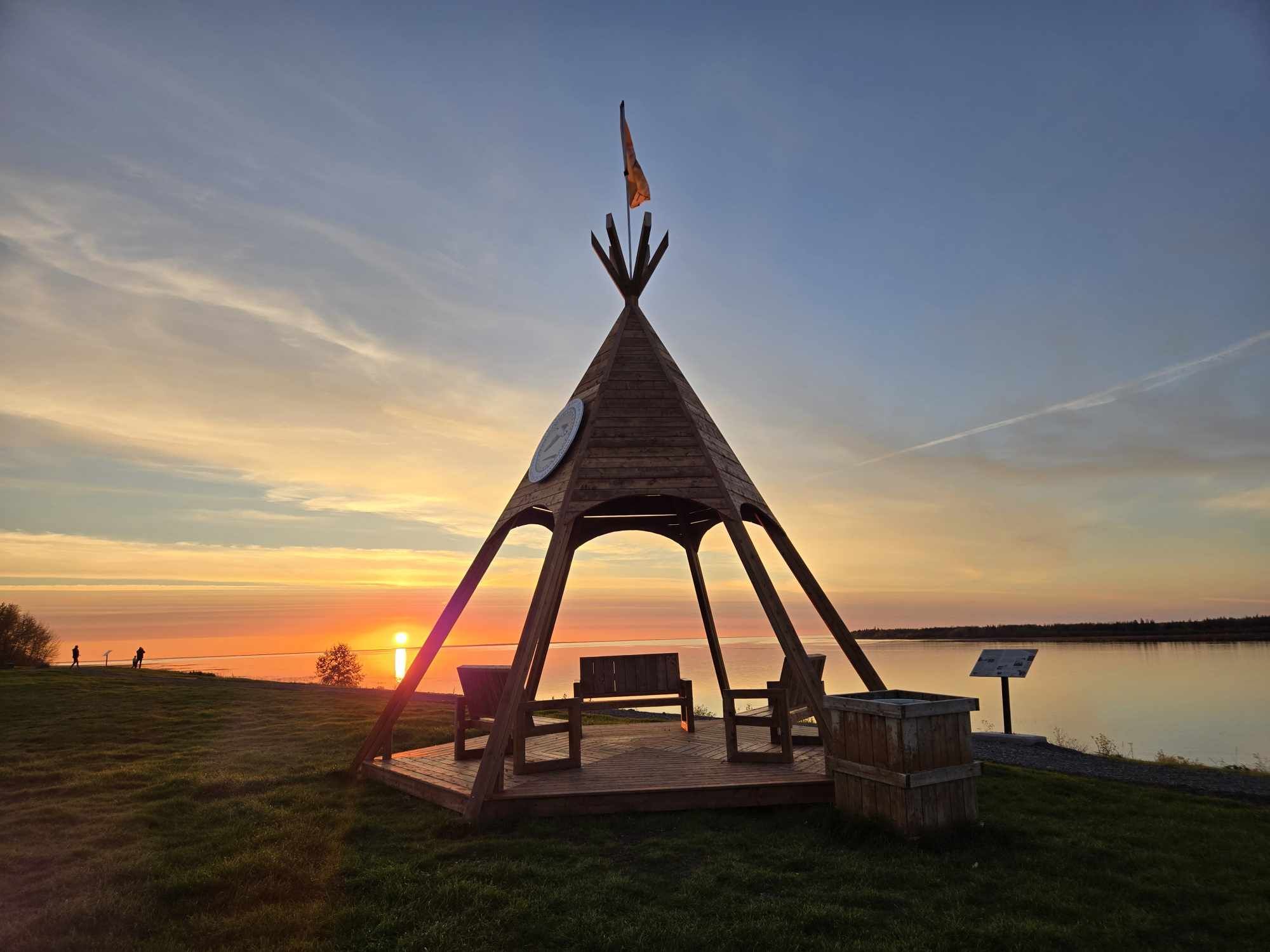
Caption: Waskaganish, Eeyou Itschee, where the Rupert River flows into James Bay
Photo credit: Dr. Heather Phipps
Heather’s students took her on walks around the community, where they explored special places, including the local cemetery and the trails along the river - reflecting on personal stories, people, and places in their lives.
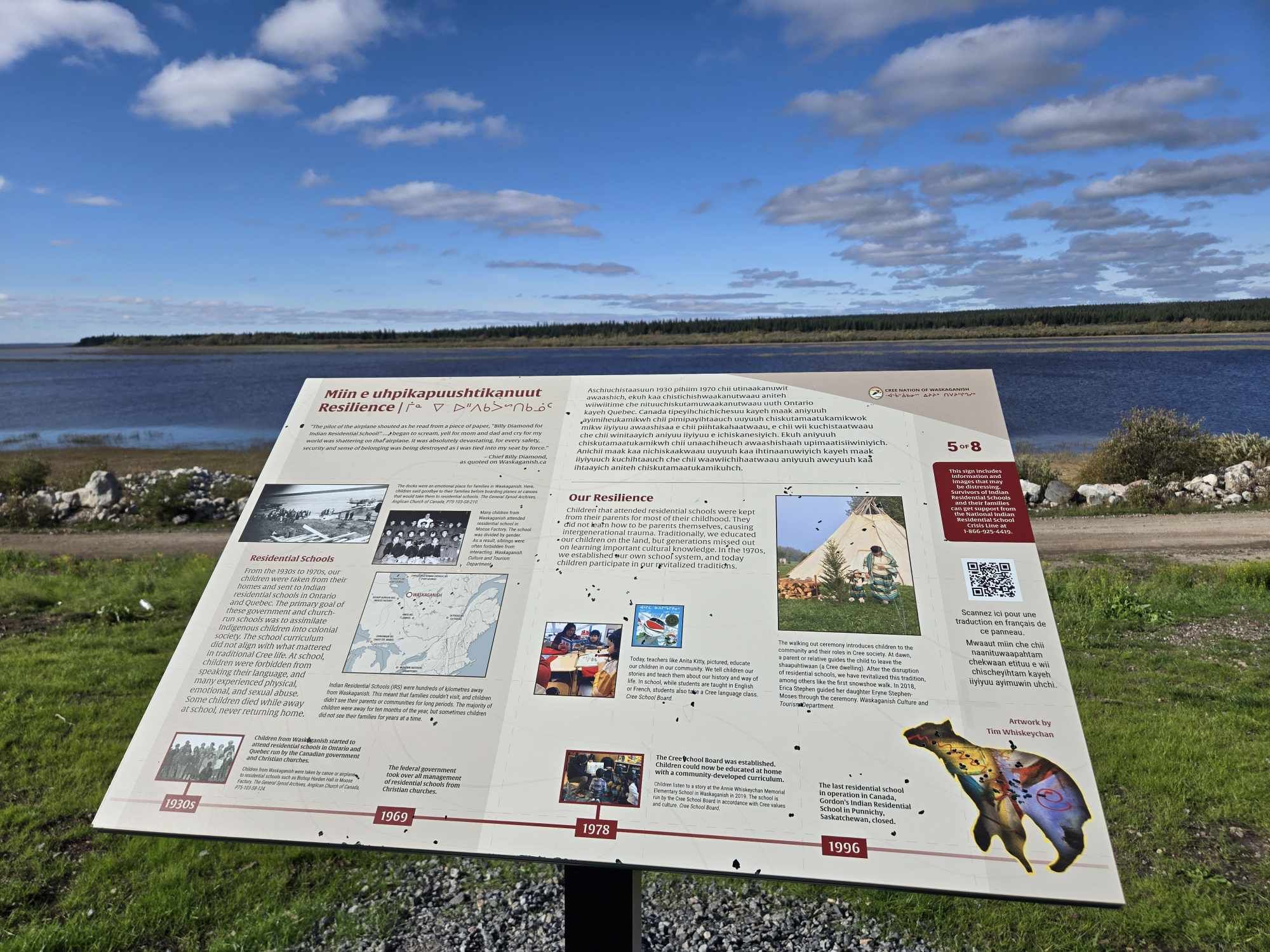
Caption: Panel display along the river describing the resilience of the community
Photo credit: Dr. Heather Phipps
Visiting the Rupert River - which had been impacted by the Hydro Dam - and was particularly poignant. The dam had slowed the river, once known for its strength, and displaced communities.
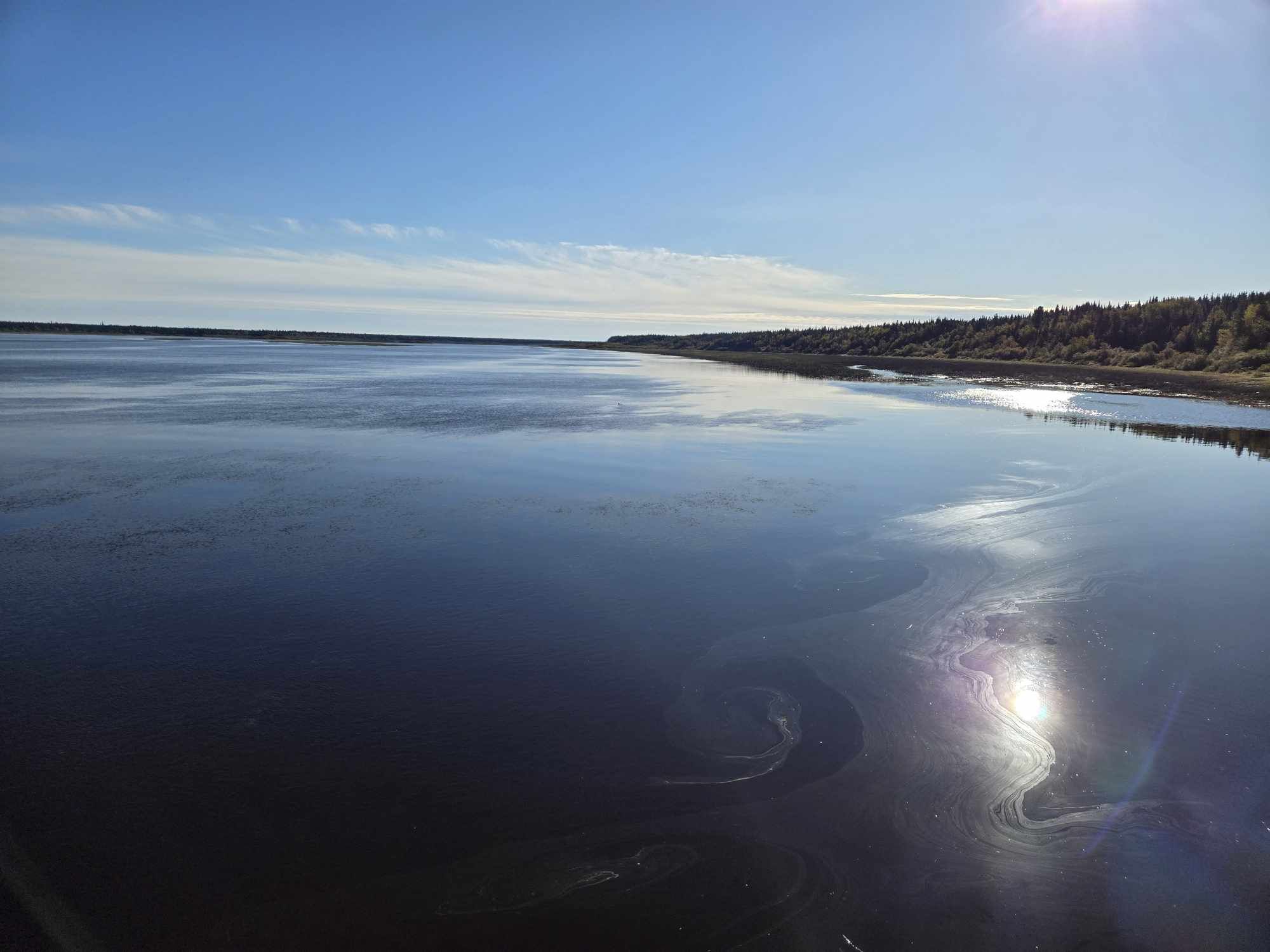
Caption: Walk by the Rupert River with the Language Arts class in Waskaganish as inspiration for language pedagogy
Photo credit: Dr. Heather Phipps
“It's a beautiful time of year. I suggested to my class that we can walk outside and be inspired by the land, sky, and water for our Language Arts course,” says Heather., “They were enthusiastic. We took walks and reflected on place, which became a focus of journal writing, stories, and poetry”.
Mary Gillies, a Bachelor of Education student in the Language Arts course in Waskaganish, reflected in her journal: “I want to be a teacher because I find inspiration in nature and storytelling. Recently, a trip to the river reminded me of how much we can learn from our surroundings. I would love to take my students on similar outings where we can talk about what we see and feel. As we walked by the water, I noticed the sounds of the flowing river, the rustling leaves, and the bright colours of the plants. It felt like the world was alive and full of possibilities."
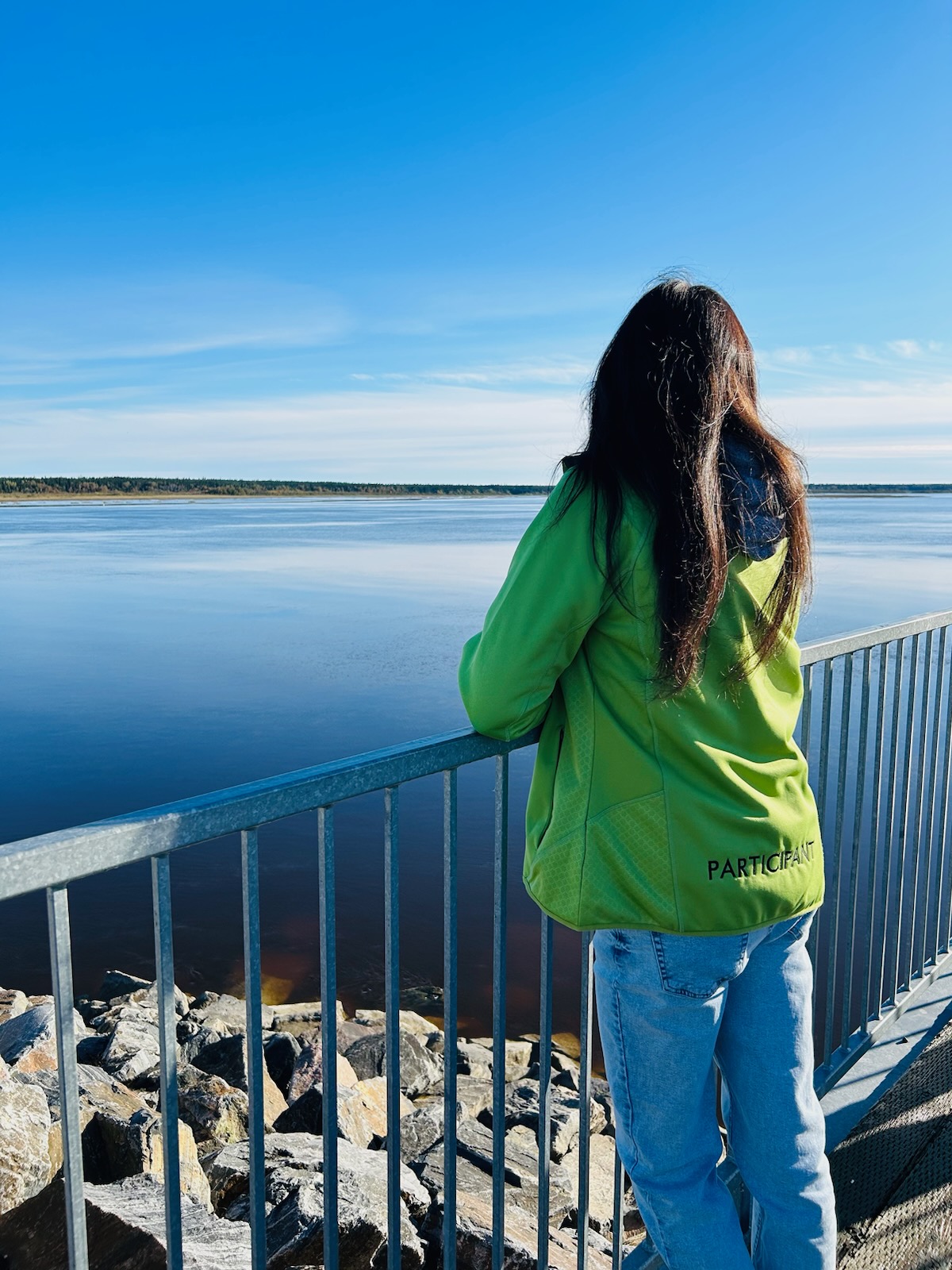
Caption: Mary Gillies, a Bachelor of Education student in the Language Arts course in Waskaganish
Photo credit: Mary Gillies
Below are three poems composed by students, inspired by the land, water, sky, and stories during the Language Arts class.
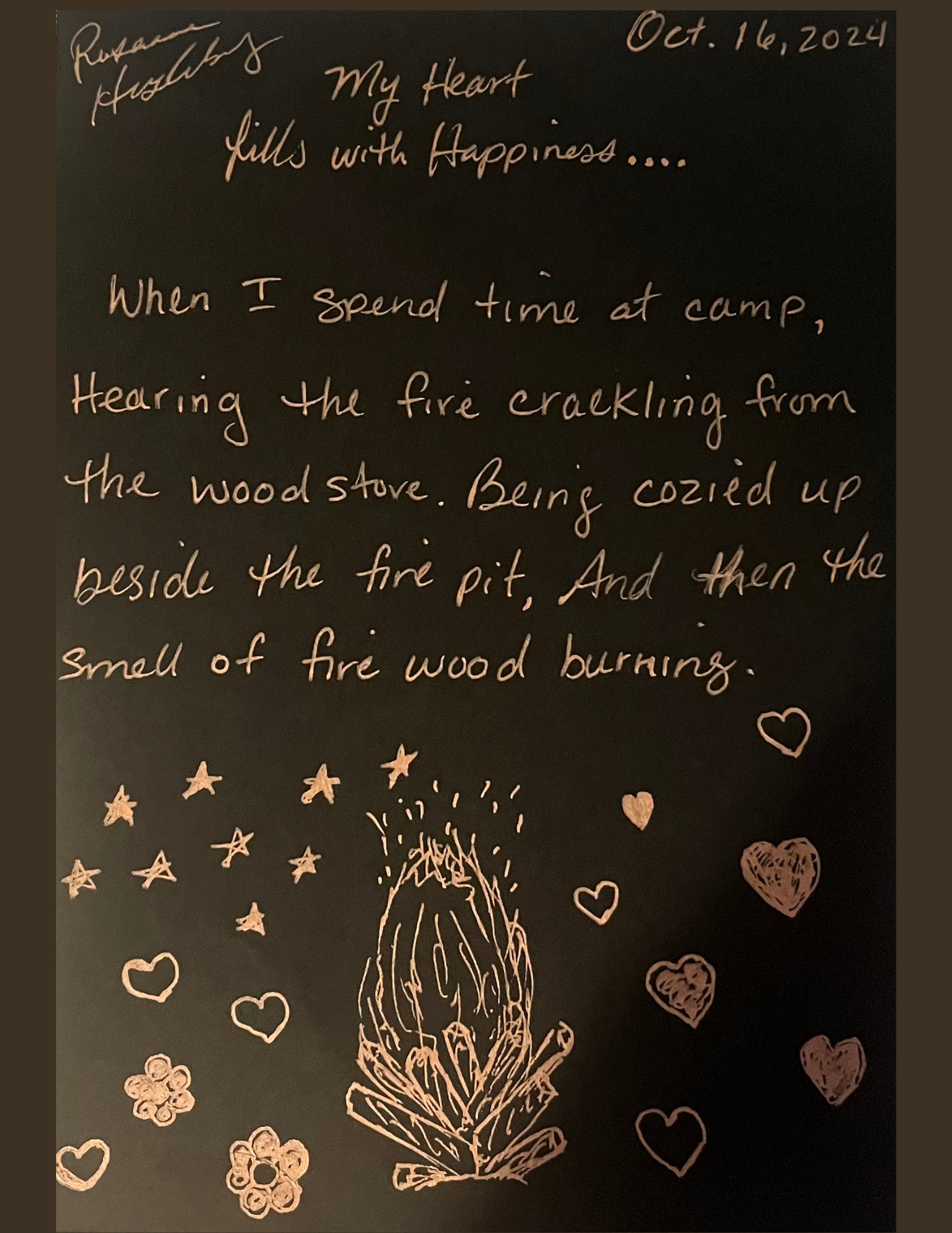


The Cree School Board, founded by Chairman Billy Diamond in 1975, has played a vital role in supporting local Indigenous education in the Cree communities of Eeyou Istchee. This includes the creation of the Literacy Centre, which produces teaching materials in the Cree language, created by the community.
One memorable moment for Heather was when her students took her to a special place by the trees and river, where they paused to listen to the wind and water. It was peaceful. They admired the changing colours of the Tamarack trees, and one student shared that, if ever lost, the trees would guide us.
“My students taught me about their syllabics chart and different dialects of Cree, and I shared my own experiences of teaching and learning in various contexts, both in Canada and abroad,” Heather says. “This is an experience I will always remember, and I do hope to go back.”
“Language and cultural identity are central to education. Indigenous languages are very strong in northern Quebec, in Eeyou Istchee, and the Cree language is taught in the schools. The schools have three languages: Cree, French, and English, and students are multilingual,” says Heather.
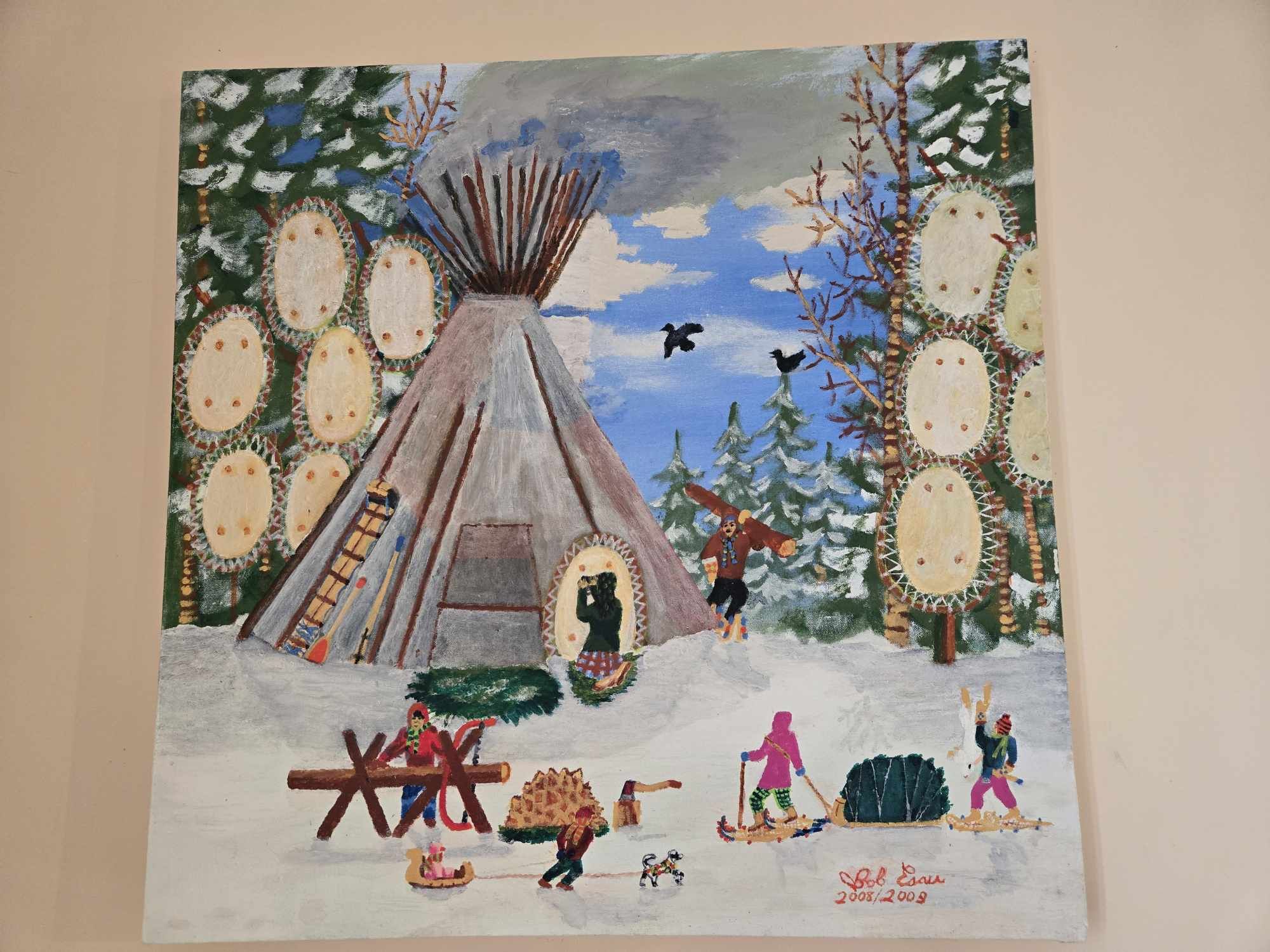
Photo credit: Dr. Heather Phipps
“We had a local storyteller and teacher, James Jonah, a Cree speaker, who shared traditional oral stories of Cakapish Snares the Moon. This was a highlight for the students. These are traditional Cree stories, which I’ve had the chance to learn through courses at First Nations University. I’m glad I could hear different versions, and it is amazing how stories have been transmitted intergenerationally for so many generations through the oral tradition,” says Heather. "I'm grateful for the opportunity to learn valuable life lessons about life and values through oral storytelling, including courses with Solomon Ratt, Professor Emeritus from First Nations University.”
Heather emphasized the importance of integrating oral storytelling with visual arts, map-making, journaling, drawing, poetry, drama, and music as essential components of teaching. In her Language Arts class, multiple forms of literacy were explored.. Each student selected their preferred teaching methods for final presentations and projects. “This approach not only built their confidence but also inspired them as they learned from one another,” says Heather.
B.Ed. student Mary Gillies describes the connections between language, culture, and place as central to her pedagogy and teaching philosophy. She expresses that including “nature in lessons can help students describe their experiences and encourage them to write creatively. By exploring the river, they can see how words bring their feelings to life. I also want to include the Cree language in my teaching, as learning Cree words related to our experiences will help students connect with their culture and feel a sense of belonging. I want to honour my experiences and the lessons from my ancestors as I work with students. This way of teaching not only enriches my own journey but also helps my students feel like they belong. I’m excited to keep learning from elders and sharing these valuable lessons, knowing this path can lead to real change for both me and my students,” says Mary.